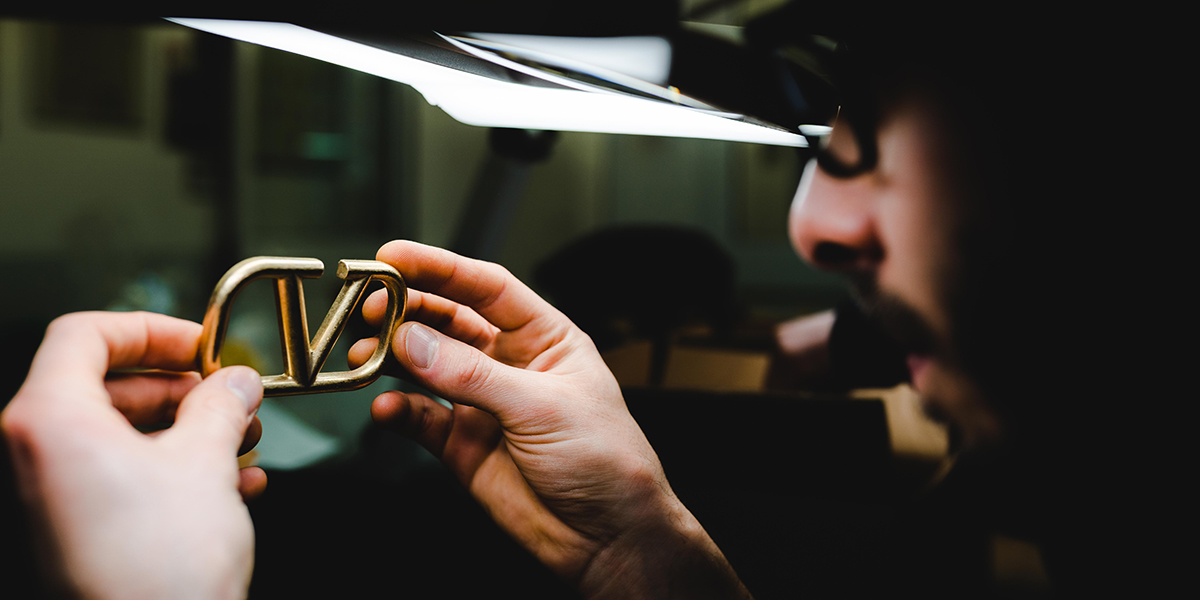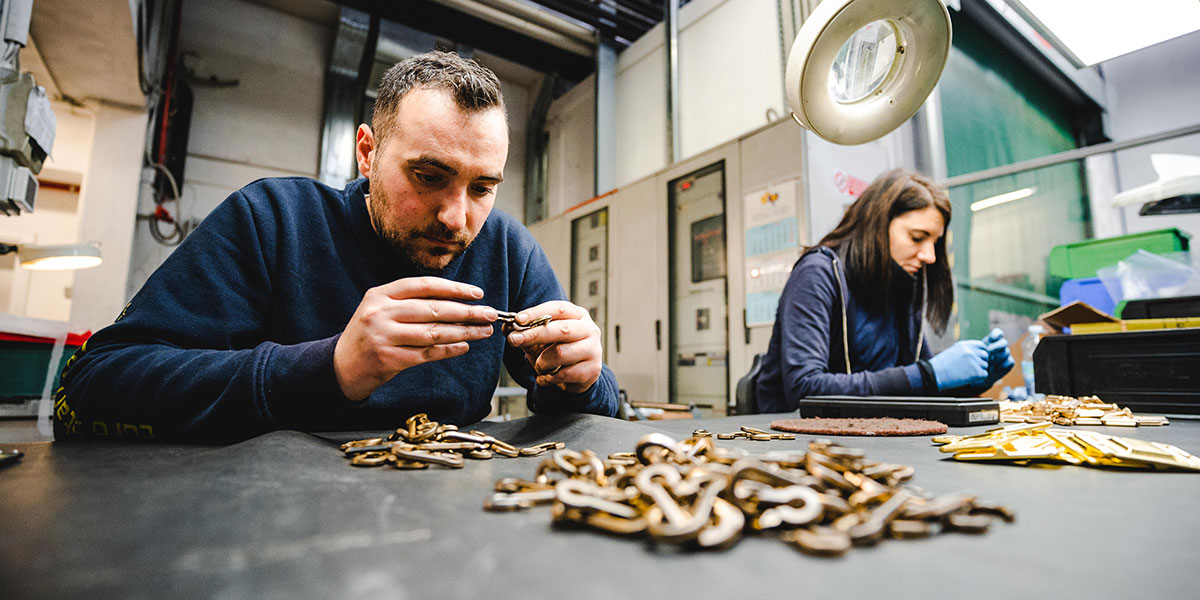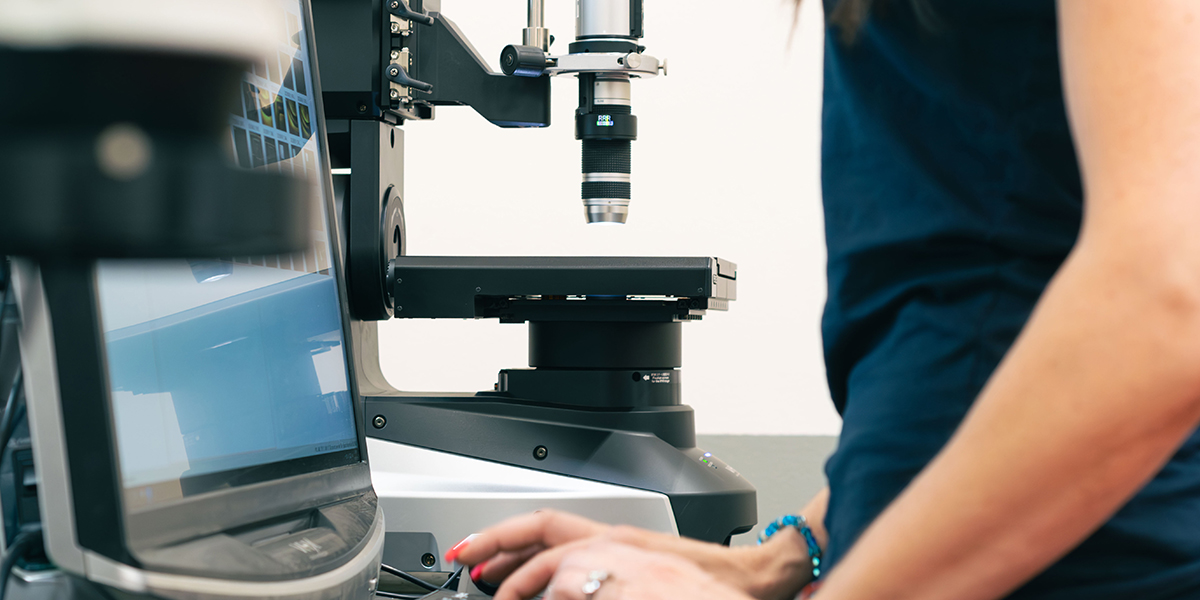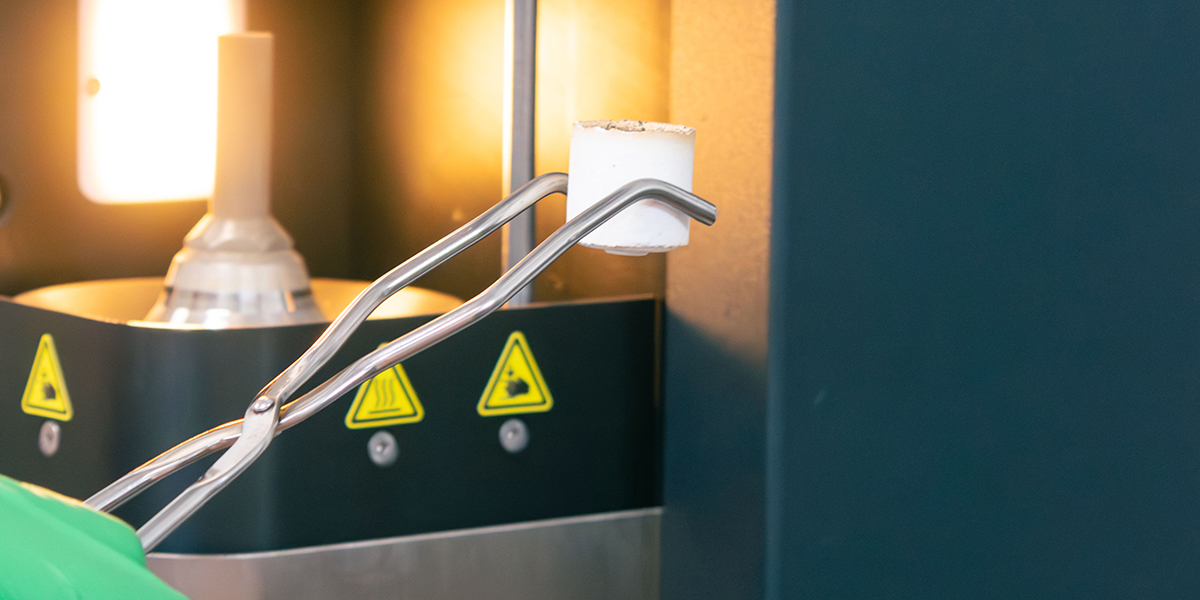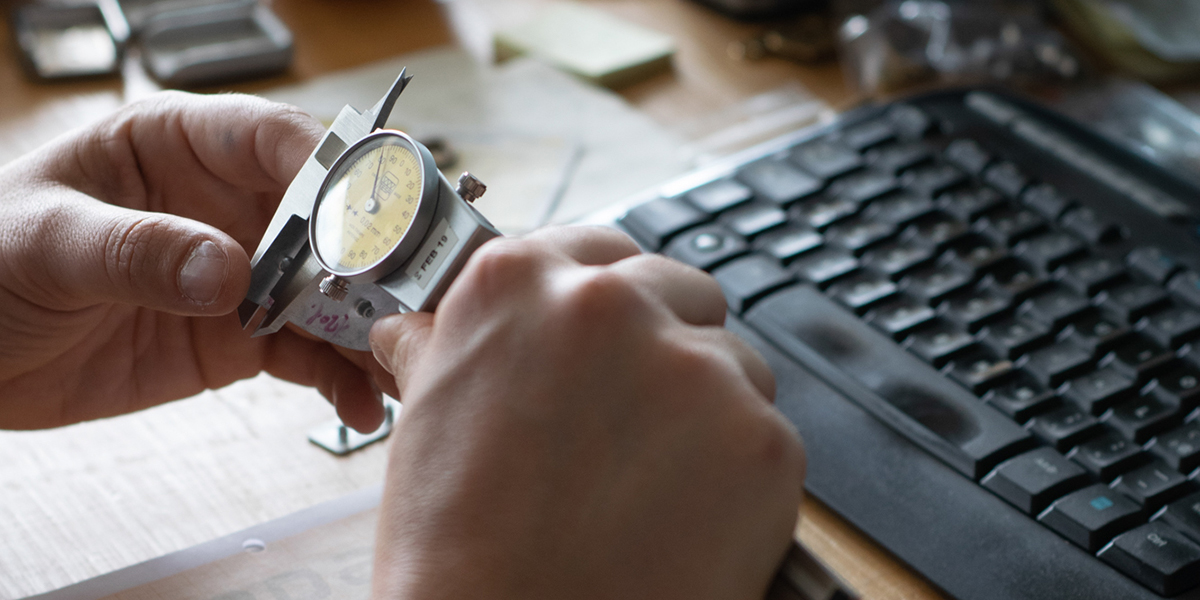Projectors, microscopes, test booths… and the irreplaceable experience of operators
The importance of the theme of quality, in the broadest sense of the term, has been the company’s heritage for Euro Stampaggi since the early 2000s: this is demonstrated by the certification of its ISO 9001 management system, obtained in 2004. Procedures were already in place in the company to ensure consistent results, both in terms of the effectiveness of the process and in terms of the characteristics of the products manufactured.
The importance of the theme of quality, in the broadest sense of the term, has been the company’s heritage for Euro Stampaggi since the early 2000s: this is demonstrated by the certification of its ISO 9001 management system, obtained in 2004. Procedures were already in place in the company to ensure consistent results, both in terms of the effectiveness of the process and in terms of the characteristics of the products manufactured.
Procedures were already in place in the company to ensure consistent results, both in terms of the effectiveness of the process and in terms of the characteristics of the products manufactured. However, the fashion market was not yet ready for the concepts of dimensional and geometric tolerances, as specifications to be shared between customers and suppliers. Only years later, these have become widespread in the industry, to become today key information, without which no one does anything.
A decade ago, the company’s CMM measuring machine (Coordinate-Measuring Machine) and the profile projector were intended for the verification of moulds and “some” mechanical components produced for hot forming. Over the years, the company’s metrology and quality control room has been enriched with projectors with reflected light optical profiles, able to detect the depth of engravings, which mechanical “probing” systems could not have reached, in addition to optical microscopes able to perform metallographic analysis, essential to understand the customer’s difficulty in cleaning an accessory.
The application of MIM technology in the fashion industry then necessitated the acquisition of equipment capable of evaluating corrosion resistance, such as the salt spray test booth, or rather the carbon analyser, to confirm compliance with the parameters of sintered steel.
Over the years, the process and final quality control systems have evolved and changed to meet the demands of the market, and much progress has been made to identify control standards shared with the customers themselves.
The aesthetic characteristics of most of the items produced by the company, however, still make an individual’s visual skills irreplaceable in ensuring the “aesthetic” conformity of products. Irreplaceable, but also questionable, and this poses the quality control of today and the future before a challenge, which turns out to be to identify equipment that is able to guarantee the “aesthetic” quality, without fear of contradictions or interpretations.
For years our company has been carrying out research in this field and will continue to do so, always convinced that only those who invest in research and innovation can guarantee the future of a company to their customers and employees.
At Euro Stampaggi every process is controlled during its progress (in-process control) and the outputs from it are then validated and checked (final control).
In-process control
This is performed during the production phases. In designing the moulding equipment, the Technical Department, in collaboration with the Sales Department, collects and evaluates the customer’s requirements and plans the manufacture of the mould in order to satisfy these requirements.
During the manufacture of the equipment each individual responsible for the various phases checks their work against the technical drawings, detailed work sheets and appropriate, calibrated measuring tools.
In the moulding and shearing phases of the batch, in-process controls are carried out by applying procedures that provide for the preventive segregation of those pieces which still need to undergo checks. During these processes, the operator has at their disposal, in addition to the technical drawings and measurement tools, information on any defects found in previous production runs. All these in-process control activities are recorded.
Final quality control
Each process is validated and checked, including when completed.
The design output (solid model) is verified by the customer.
Manufacturing the equipment is validated internally through testing as well as by the customer by sending them a sample produced during the internal testing phase.
For products which are moulded and sheared, the final control is essential since, during the process, due to its extremely fast nature, it is not possible to address certain aspects: the preference is to deal with them with the final quality control.
How well the pieces manufactured meet the required aesthetic, dimensional and functional demands is thoroughly investigated in this final activity. It is performed by operators who are dedicated exclusively to this task and who operate in compliance with UNI ISO 2859. Once the pieces have successfully passed the final quality control, the control operators – and only these operators – give their approval for them to be shipped. Every control activity is recorded and stored in a database which is reviewed both monthly and annually by the company’s executive management team.

